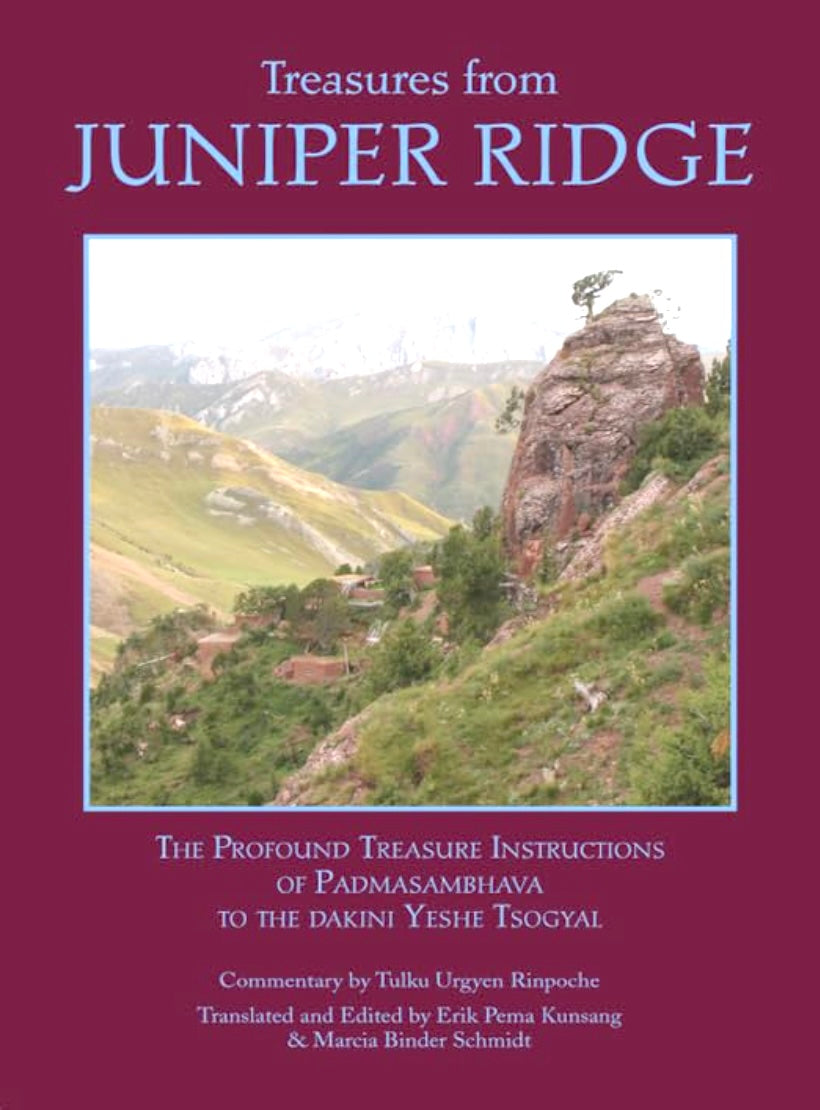Treasures from Juniper Ridge
Treasures from Juniper Ridge
Couldn't load pickup availability
Treasures from Juniper Ridge combines meditation and pith, practice instructions in a way that is easy to apply and comprehend. It is a compilation of revealed hidden teachings from one of the greatest masters of Vajrayana Buddhism, the 9th Century Master, Padmasambhava. It is replete with pieces that are simple, direct and profound. These instructions are fresh and pertinent to our times
As Tulku Urgyen Rinpoche states:
“Before leaving Tibet Padmashambhava hid many teachings to be uncovered in the future by revealers of hidden treasures. Because of changes and fluctuations in world history, each treasure revealer would appear in designated times to benefit beings facing difficulties. Being aware of future problems Padmasambhava concealed specific practices especially suited to the time they were to be discovered. Hidden teachings come directly from Padmashambhava and are revealed by his disciples in future incarnations, and then are spread among people for immediate practice.
The special quality of hidden or terma teachings concealed by Padmasambhava is that they provide a method for accomplishment appropriate for each generation, period of time and individual person who meets them. These Teachings from Juniper Ridge contain the essential meaning of hundreds of instructions.”
What sets this book apart is that the compiler of the teachings was Yeshe Sogyal, one of the few woman adepts in Tibetan Buddhism.
Tulku Urgyen Rinpoche continues,
“Yeshe Tsogyal was a wisdom dakinis an emanation of a female buddha. Externally, the word dakini literally means `sky-dweller,’ a celestial being that does not need to walk on the ground. There are different types of dakinis: wisdom dakinis, activity dakinis and mundane dakinis. By working with Padmasambhava as his main disciple, she was able to codify these precious teaching and hide them for future generations. She did a great service to humanity with her activity.”
In this single source book there are various revelations for the advanced path as well as in-depth explanations of assorted aspects of practice, deity, death and dying, non-conceptual meditation and recognizing mind nature. The book outlines ways to apply these teachings for the modern student, while remaining true to traditional principles.
Paperback
169 pages
Rangjung Yeshe Publications 2008
Share


